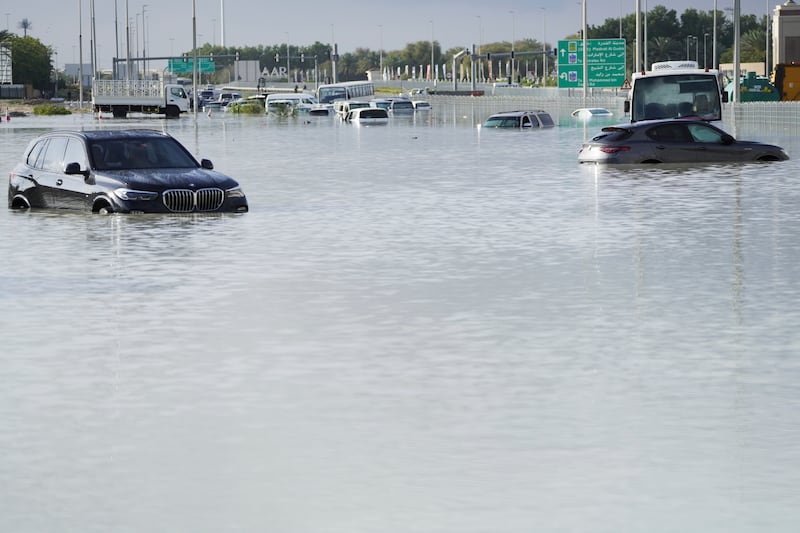MY HEART feels like it's beating on the outside of my chest. I'm anxious, out of my depth and I sound like Darth Vader. But for the first time in my life, I'm snorkelling.
As I plunge my face into the sea and force my body to relax so my limbs can actually float, the stress starts to fade away. As a weak swimmer who's afraid of the ocean, I never thought I'd be able to do this.
I never thought I'd go to Oman, either. But here I am, snorkelling. And for anyone in need of some winter sun, it's a destination that – surprisingly – takes some beating.
Sitting at the foot of the Arabian Peninsula, Oman is part of the Middle East I'd always lumped in with Dubai and Abu Dhabi. They're places that have no real appeal to me, because I associate them with being man-made and money-orientated.
But Oman, I'm discovering, is very different. It's beautiful, for starters. The terrain encompasses desert, riverbed oases and lengthy coastlines on the Persian Gulf, Arabian Sea and Gulf of Oman. Far from being a flat, bland blanket of desert, the country's Al Hajar mountains rise into the clear blue sky, making almost every vista an appealing one.
The skyline, I'm told by my guide, Niaz, won't ever be filled with flashy, high-rise hotels, because no building is allowed to be taller than the 91.5-metre Sultan Qaboos Grand Mosque (which is considerably shorter than the 828-metre high Burj Khalifa building in Dubai). The people here seem uber-friendly too; they care about their city and culture, and genuinely want to share it with the rest of the world.
Oman's popularity is definitely increasing, made possible thanks to the bigger New Muscat International Airport, which opened this year, and the fact you can now apply for visas online.
The Shangri-La Al Husn Resort & Spa, in Oman's port capital of Muscat, has noticed a shift. Fully booked when I visit in March, I'm told 40 per cent of its (mostly UK) customers are returning visitors. And they've also noticed travellers are keen for more experiential trips, featuring a little bit of luxury and a dollop of wellbeing.
Here are five that will blow your mind...
1. Snorkel for turtles with Oman's only turtle ranger
As dream jobs go, being a turtle ranger has definitely got to be up there, and Mohammed Al Hasani is Oman's only one. He's worked for Shangri-La since 2005 and has helped more than 70,000 baby turtles start a brand new life.
I find him at Al Husn's private gem of a beach. Mohammed patrols the shores during hatching season (January-August) and if he spots a nest, he places sticks around it to protect the babies. The turtles dig a hole half a metre down in the sand – which can take them up to an hour and a half – and lay over 100 eggs. And then Mohammed makes a road down to the sea, so they can get there more easily, "like a red carpet", he says with a smile.
Taking the plunge, we grab our snorkels and flippers, with many of us opting for the full face mask. This is the one that makes you sound like the Sith Lord, but it means you can just breathe in and out normally, so it's perfect for beginners, and anyone who gets a bit nervous in the water.
Mohammed directs the stronger swimmers straight into the path of a hawksbill turtle – one of five varieties spotted here – gliding through the water without a care in the world.
I swim back to where my feet feel safer – where I can just touch the bottom – and float around while fish swim right up to me. Sinking my face into the salty sea, I spot slow, black butterfly fish, hanging out at the bottom of the rocks. A shoal of slim wrasse shimmy past and I follow the parrotfish and angelfish, all under the watch of a small heron.
There are few better ways to start the day.
2. Visit the beautiful Sultan Qaboos Grand Mosque
I wander slowly, mouth agog, at the sheer beauty that exudes from Muscat's Grand Mosque. Completed in 2001, it's modern Islamic architecture at its finest, gifted to the nation to celebrate Sultan Qaboos's 30th reining year. Free to get in, every inch of the 416,000 square metre site is exquisite. The amount of twinkle in the gloriously oversized chandeliers is something that's only visible to the naked eye. The 4,263 square metre Persian carpet, I'm told, is the second-largest handloomed Iranian carpet in the world, created by hundreds of women over four long years.
Words can barely describe the vibrancy of the pure turquoise green in the intricately-detailed tiling, and the stunning stained-glass windows. There's unbelievable craftsmanship in the shape, cornicing and painting of the dome, and anyone going to Muscat would be mad to miss out on such a visual feast for the eyes.
Strict rules apply here, though: All the body must be covered by clothing, including wrists and ankles, and headscarves for women are a must.
3. Eat edible flowers with the hottest new farmers in town
Visiting a farm isn't an especially typical holiday excursion, but as one of Shangri-La's more experiential offerings, heading over to Yuzu to meet the Al-Said brothers, is a real treat.
Omar, Adam and Fahar grew up in Oman but were educated in London, where they quickly became foodies. But back at home, good restaurants can be hard to find. Around 80-90 per cent of food is imported here – which they believe is the problem.
Their parents had an almost unused farm, so the boys set about becoming farmers – with a lot of help from Google.
The brothers giggle as they tell their story. It sounds like they're winging it, when in actual fact, they've nailed it. The flavours that pour out of the best-tasting tomatoes I've ever eaten are tantalising (they have 10 varieties). The red lace mustard leaves taste like potato to start with, before the mustard comes through, and they almost don't want us to try the wasabi mustard leaves, because the spicy kick at the end is so punchy.
We learn all about edible flowers – including the fennel flower, which we're told has taken over from saffron as the most expensive ingredient in the world, the tea-flavoured snapdragons and the pretty pink dianthus, which tastes a bit like cloves.
They're already supplying around 12 hotels with their ingredients and are a genuinely exciting new start-up.
4. Swim in a fresh water wadi for views you'll never forget
If you go to Oman, the one thing everyone should do is go to a wadi – an oasis. We take a drive up into the mountains, passing two ladies dressed in colourful robes, walking along the road carrying their shopping on their heads. Rusty soil tracks lead the way, while giant rocks threaten to drop down and fall on us at any moment, though I'm assured that definitely won't happen.
The colours and textures of the mountains change dramatically as you drive through them. Thundering great red and grey boulders soon turn to messy shale, and mossy, sandy ridges. Every shade of green, red, grey, brown and orange flashes past the windscreen.
Long-haired black and white mountain goats – looking like prettier, perky Border Collies – block our road for a few moments while they shimmy their shaggy coats, but a gentle beep of the horn sends them hopping off and out of our way.
Beautiful craggy rouged rocks lead us up to the wadi as we drive through splashy puddles of water. The rubbly mountains are sliced like a loaf of bread and, deep in the valley, is a clear pool of water just begging to be dipped into.
Beneath a canopy, chefs are barbecuing meat for our outdoor feast and after a swim, we sit on cushions on the floor, on a giant traditional rug. We eat a variety of mezze – salad, hummus, samosas, rice, flatbreads and meat. It's the perfect way to spend the day, exploring the real beauty of Oman.
Wadi Arbeyeen Tour costs OMR 120 (around £245) per person. Lasts from 9am-3pm and includes a barbecue lunch, drinks, and Champagne on arrival back at the hotel.
5. Book a massage in Oman's first L'Occitane spa
Back at Shangri-La's Al Husn hotel, L'Occitane's only spa in Oman opened earlier this year. Book into the indulgent, adult-only Hareer Spa – a soothing space to take time out, all decked out in neutral tones and shades of lavender – paying homage to the colours of Provence, where the brand first started out.
Have all your stresses stroked away as you indulge in the signature treatment, designed exclusively for the spa by L'Occitane. The Omani Heavenly Honey treatment (OMR 70/£140 for 90 minutes) begins with a delicious, softening scrub, before moving into a deeply relaxing massage, easing tension and calming the mind, whilst leaving skin enveloped with the sweet scent of Omani honey – something the region is famous for.
Tour and lunch costs OMR 75 (around £150).
FACT FILE
:: Shangri-La's Al Husn Resort & Spa (shangri-la.com/alhusn) offers rooms from OMR 250 (approx £505) per night, from October to April.
:: British Airways return flights from London Heathrow to Oman start at £349.
:: Etihad and Emirates operate flights from Dublin to Muscat.






